Creating a Pathway to Competition
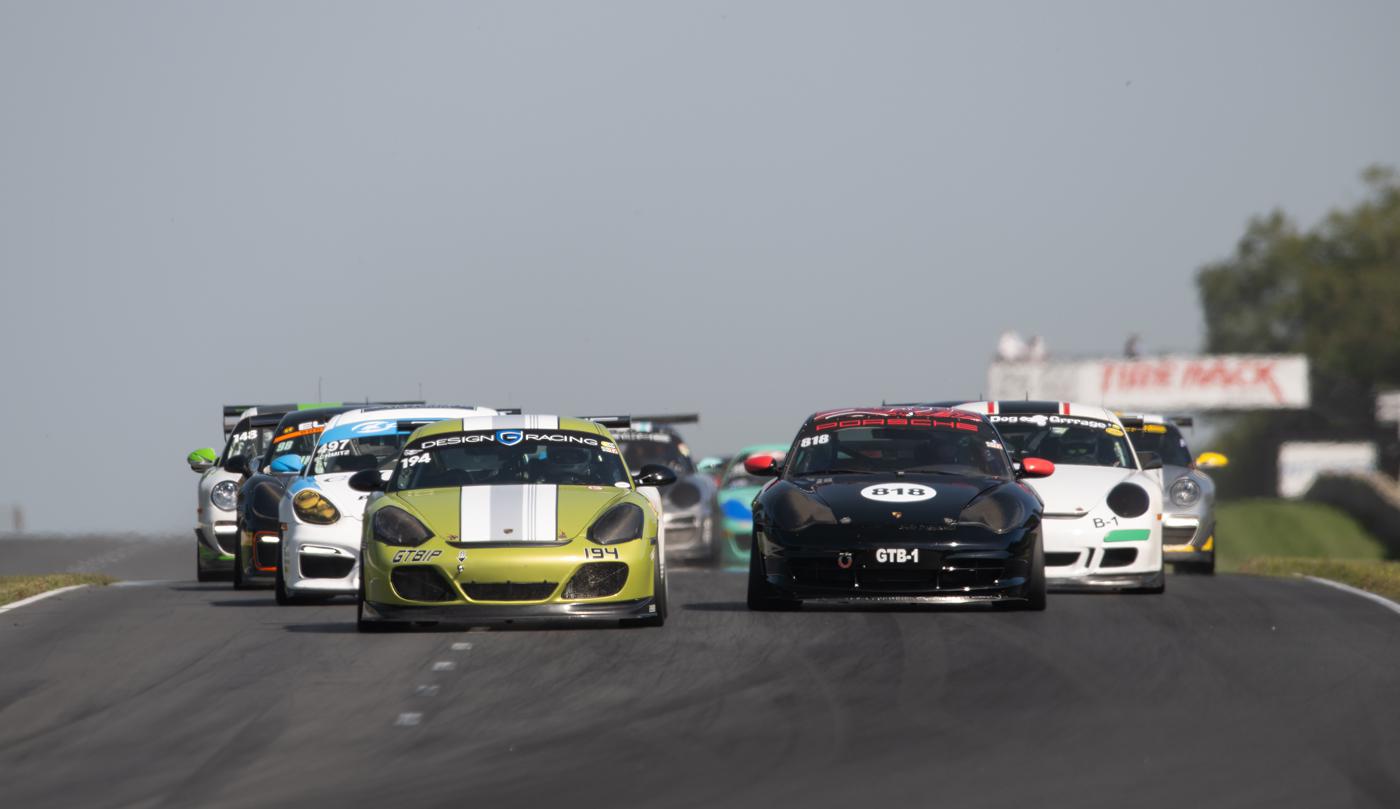
With major sanctioning bodies and many automakers now offering dedicated programs, high-performance driving events are becoming preeminent motorsports gateways.
For decades, autocross events have served as the starting point for the careers of countless racers. The format’s low operating costs and ability to cater to street-driven vehicles have made it
a natural entry point for drivers who are looking to better understand the dynamic limits of their car and improve their skills while doing so.
But with the influx of formidable factory-built performance vehicles produced in recent years, sanctioning bodies as well as the OEMs themselves have sought ways to give drivers another venue to explore the full capabilities of these machines.
This has ushered in the era of high-performance driving events, or HPDEs. These programs follow an ethos similar to grassroots autocross events and focus on minimizing the barriers to entry through low costs and basic car preparation requirements. And much like autocross events, participation in HPDE programs also provides an opportunity for these drivers to get connected to a motorsports-minded community of enthusiasts.
Held throughout the country, these programs vary in format and mission from one organization to another—and sometimes even from region to region within an organization. But one truth remains consistent throughout: A growing number of today’s racers are getting their start in high-performance driving events.
Sports Car Club of America
While the Sports Car Club of America (SCCA) in Topeka, Kansas, has long offered HPDEs during race weekends largely as a way of providing racers additional practice sessions in the lead-up to competition, the sanctioning body decided to take a more strategic and formalized approach to the concept when it introduced Track Night in America in 2016.
The nationally offered program provides enthusiasts of varying levels of experience the ability to push their street cars on some of the most famous race tracks in the nation. As the name implies, Track Night in America differs from most HPDE programs due to the fact that most of these events begin in the afternoon on a weekday rather than the traditional morning on a weekend.
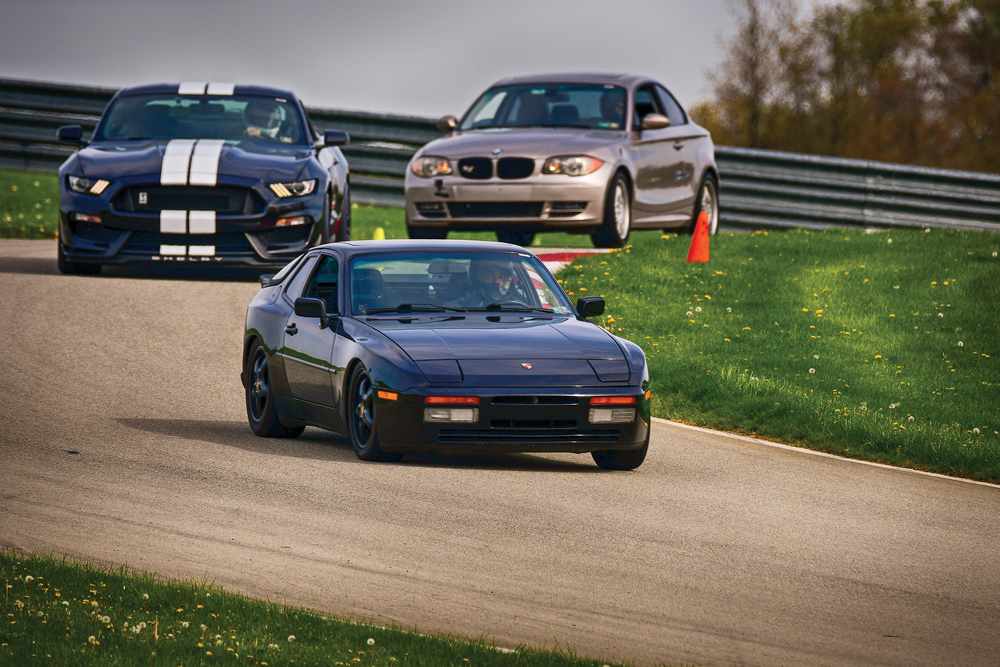
“Access was the core concept,” explained the SCCA’s Dan Dennehy-Rodriguez. “We wanted to break down as many barriers to entry as possible so that whoever wants to pursue going on track in their car is able to do so in an enjoyable way. And a big component of that is scheduling. Doing this in the afternoon during the week allows someone to take a half-day from work rather than committing a full day or a weekend to it.”
The events typically consist of three 20-minute sessions on track, and instructors are onsite to teach participants the fundamentals of track driving. Dennehy-Rodriguez said that while some of the drivers who come back to participate in multiple Track Night events are mainly interested in experiencing the various race tracks that the program visits, others have used Track Night in America as a steppingstone into solo and wheel-to-wheel racing within the SCCA.
“There are so many stories of folks using Track Night as that pathway, but the one that immediately pops in my head is about my friend Alan,” Dennehy-Rodriguez explained. “He has always had an interest in cars and works in the industry, and when the Track Night program began, he started taking some of his show cars out to these tracks. After a while, he decided to take one of those cars—a late 2000s VW GTI—and convert it into a prepped race car. In 2021, he made his debut at the Runoffs at Indianapolis in the T3 class, driving something that had been a street car just two years prior.”
He said that while folks who bring late-model Corvettes and 911s may have the financial flexibility to invest in a dedicated race car and hauler, more often than not it’s the drivers who show up with the relatively inexpensive vehicles who are more likely to commit to a competitive effort down the road.
“In our experience, if someone wants to go road racing and they have the financial means, they tend to go straight to that destination,” he continued. “They might have a personal car that they take to HPDEs on occasion, maybe for additional instruction or to see new track layouts. Generally, what we see with folks who have these really fast cars is that they’ll quickly recognize the performance potential of the car and add safety elements to it, but then they’ll stop there. For us, it’s the person who shows up in a $5,000 hatchback. Those folks are more inclined to see that vehicle as a disposable item, and they’re more willing to cage it, track it, and race it as a result. We see that with a lot of early 2000s hatchbacks like the Volkswagen Golf and Honda Civic, along with more affordable sports cars like the Mazda Miata, Scion FRZ, Subaru BRZ. Older BMWs and Ford Mustangs are popular options as well.”
As drivers gain experience through Track Night program participation, they’re invited to share in-car video with SCCA partner Blayze to help improve their technique through online coaching. Track Night participants can also maintain a driver logbook that can track their progress if time trials or road racing is their end goal.
“This isn’t the logbook that goes with a race car,” he explained. “This is specific to the driver. Every time they go to a Track Night and they’re a good citizen at the event, they can go to an instructor and get signed off for that event. That shows us that this is someone who is playing by the book, wants to get a lot of experience, and is focused on developing as a driver. And when that driver wants to move into Time Trial, that logbook can be used to instantly upgrade them from a novice time trial license to an intermediate or even advanced license. The logbook provides evidence that they’re ready, and we can trust them in those groups. If they continue to do well in Time Trial and express the desire to go road racing, they can then go to a region’s competition school to take that next step.”
Hooked On Driving
Established in 2004 and expanded into a national program in 2007, Hooked On Driving in Copperopolis, California, focuses on getting drivers up to speed using the core principles of safety, fun, and learning.
“The line that is repeated in our drivers’ meetings is, ‘Hey gang, welcome to Hooked On Driving. Just remember, it’s not Hooked On Racing,” said founder David Ray. “There are so many highly capable road cars available now, and there’s nowhere to drive them. The goal here is to give these folks the opportunity to do that and provide an entry-level taste of track driving.”
Ray said that while some folks who come to Hooked On Driving events are content to settle into HPDEs as their pastime and focus on honing technique simply for the sake of their own gratification, there’s a percentage of drivers who eventually start eyeing motorsports as the next natural step.
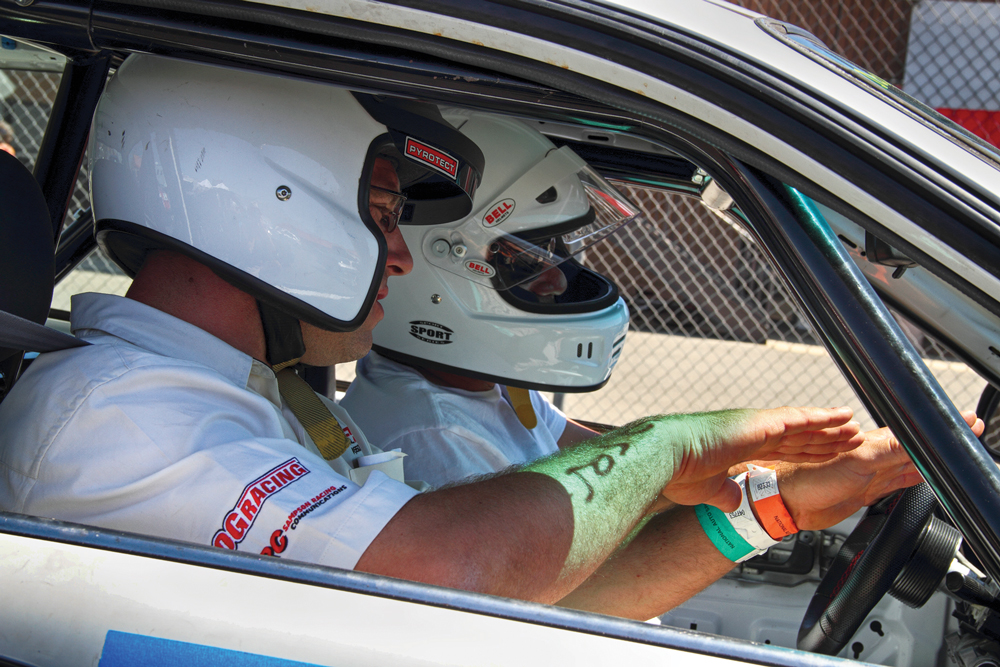
“Events like these can provide a great primer for an SCCA or NASA competition school. They’re able to walk into those programs with a lot of the fundamentals already figured out. That means they’re able to focus more on learning the rules, protocols, and race craft.”
Ray cited an orthopedist who ran his Porsche Boxster Spyder at Hooked On Driving events for a number of years before moving into wheel-to-wheel competition with the SCCA. “Eventually he was running the car on Hoosiers, and I started to realize that he was probably the fastest driver in our advanced group despite the fact that there were potentially faster cars in the field. At a certain point I pulled him aside and said, ‘You really need to go racing.’ He was immediately dominant in Spec Miata, and now he’s dominant in Spec Racer Ford.”
While Hooked On Driving teaches safety and the basics of track driving, it will also suggest professional coaches to drivers at the higher levels of experience who are looking to take their abilities to the next level. “We like to focus on teaching the fundamentals—we’re really good at that,” Ray said. “At the higher levels, we’re going to give these drivers a list of coaches who do that for a living. That approach seems to work for us.”
Ray added that while OEM programs like the Cadillac V-Performance Academy and BMW Driver’s School are able to capture enthusiasts’ attention early on with track time that’s included with the purchase of a new vehicle, those programs tend to generate more interest in HPDEs rather than taking it away.
“On one hand, the manufacturer programs are reducing the number of days that are available to us at a given track,” he noted. “But on the other hand, we are inheriting people from those programs. The manufacturers are ultimately helping to create that long-term interest in HPDEs with these drivers.”
Porsche Club of America
It should come as little surprise that Porsche was one of the first automakers to recognize the value of a formalized owners’ club and the organization of performance-focused events for members to participate in. The brand’s strong ties to motorsports as well as a dedicated fanbase led Porsche Club of America (PCA) in Columbia, Maryland, to begin hosting enthusiast events way back in the mid-1950s.
By the 1990s, the Porsche Club of America was ready to take things a step further, establishing its own Club Racing series. Today, PCA Club Racing hosts more than two dozen races per season as competitors chase championship trophies in their respective classes. And as PCA Club Racing business manager Connor Henderson pointed out, many of the club’s competitors established their path toward the podium through the PCA high-performance driving events.
“The HPDE program is about giving these owners the opportunity to get these out on track. Motorsport is what the brand is built on, so it’s a natural step for a lot of these drivers,” Henderson said.
PCA’s high-performance driving events typically consist of five track sessions over the course of a day. Instructors accompany the students for the first three sessions, then the students run a fourth session by themselves. An instructor then hops back in for the final session to provide additional real-time feedback and coaching.
“That fifth session gives us a chance to discuss any questions that might have come up,” he told us. “Inexperienced drivers might not know where they can focus on improving, so that feedback is really important.” He said that while drivers join PCA and sign up for HPDEs for myriad different reasons, the overarching theme is a desire to do more with their cars.
“Some are the folks who have 20-year-old cars and finally have the financial freedom to do a track day. We also see a lot of father-and-son teams, but it’s all over the map. Last year we had a lady in her 70s who had watched a Formula 1 race and had decided it was time to get on track for the first time. It really takes all kinds.”
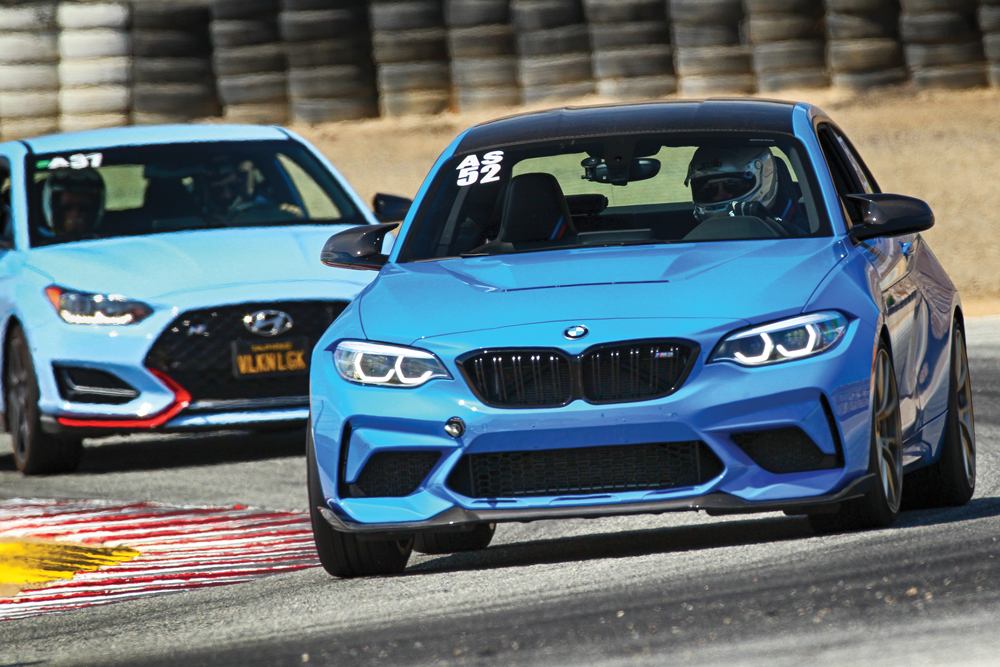
Once the basics are established, the program’s emphasis on coaching and feedback allows drivers to focus on ways to improve their performance. “That’s when you start to see the more in-depth questions,” Henderson said. “They start asking about how they can better prepare the car, and how they can better prepare themselves as a driver—what they need to do to be faster. And within that, there’s always a select group of drivers who want to be the best, and once they’ve achieved a goal that they’ve set out for themselves, they’re ready to move on to a bigger challenge through competition.”
As with sanctioning bodies like the SCCA and NASA, those seeking to make the transition from the HPDE program to PCA wheel-to-wheel racing must earn their provisional license by attending the PCA Club Racing school. Henderson said that while they often recommend that these folks consider starting in Spec Boxster—the club’s most popular racing class—some drivers are a bit more ambitious.
“We had this retired gentleman who brought a 911 GT3 to his first track day and immediately took to it. He told us about how much he enjoyed it, and we noted that if he was interested in doing so, he could pursue racing. Despite our initial recommendations, he bought a GT3 Cup car with a 997-generation 911 GT3 RSR engine shoehorned into it—a combination that was built for a Continental series. He hired someone to work on his car and a pro driver to coach him, and he ran it in our GTA3 class. Later he decided to move to a 991-generation Cup car and race it in our GTC7 class because it offered an even higher level of competition.”
PCA Club Racing events typically consist of sprint races as well as 60- to 90-minute enduro races, the latter of which allows for driver changes and more seat time. While that offers plenty of competition for most, Henderson said that a number of club members have also ventured out into grassroots endurance racing, IMSA, and other series.
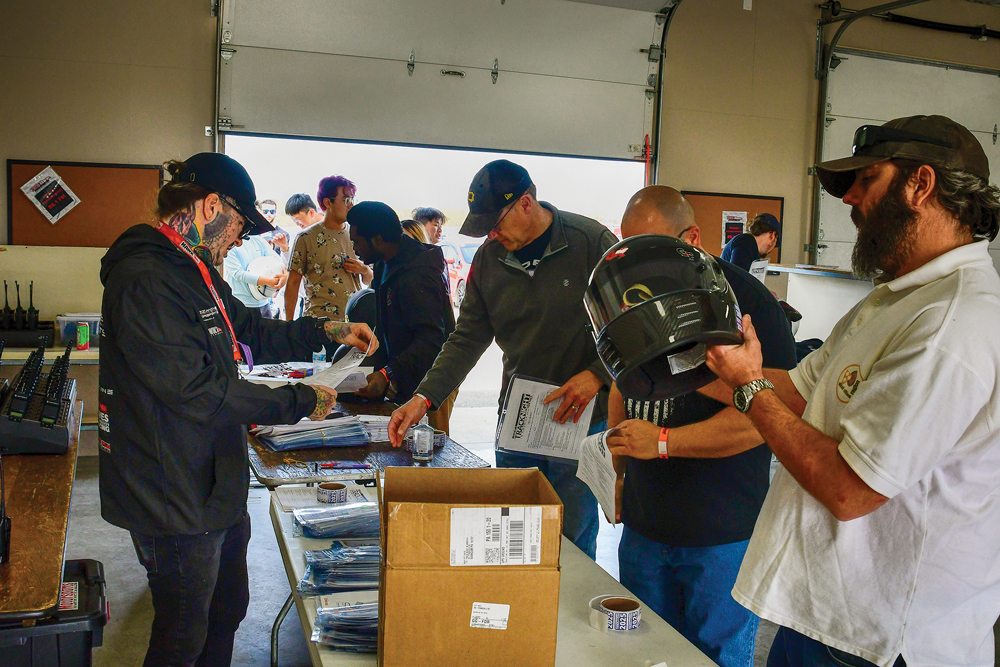
“Those tend to offer a different form of competition, and we fully respect that. A lot of times we see folks do that, and then later come back to race with PCA. At the end of the day, the camaraderie is the most important element of our Club Racing program,” Henderson added.
National Auto Sport Association
Las Vegas, Nevada-based National Auto Sport Association’s approach to HPDE notably is more structured than some others, focusing on progression through experience and offering well-defined pathways into auto racing for those who are interested in that pursuit.
“Our HPDE program has been essentially the standard of the industry ever since we established it back in the 1990s,” said NASA’s Brett Becker. “We start you off in HPDE 1 with an instructor in the passenger seat of your car, and typically you’ll have communication devices inside each of the helmets so they can talk to the drivers in a calm manner. Here we introduce them to the fundamentals, and the joy of driving fast on a race track.”
Becker reported that many of NASA’s HPDE program participants are enthusiasts who started off in drag racing or autocross and wanted more track time. In recent years, the sanctioning body’s partnership with Toyota has also provided an access point into the greater National Auto Sport Association ecosystem for those who may not have had formalized experience through those other disciplines.
“We established the Toyota GR Experience in 2019, and the program continues to expand,” Becker said. “Initially the buyers of new GR Supras received a one-year NASA membership and participation in a one-day NASA HPDE as part of that purchase. Now the program has been extended to buyers of new GR86s as well as new GR Corollas.”
There are driver meetings after each on-track session for all of NASA’s HPDE groups, which allows instructors to offer feedback based on what they observed during the previous session and provides participants with an opportunity to voice any concerns they may have. Once HPDE 1 drivers are up to speed on the basics, they have the opportunity to move up to HPDE 2, which allows participants to drive by themselves as they continue to hone their skills.
“HPDE 3 and 4 are where things start getting pretty quick,” said Becker. “If a driver doesn’t have the pace for these groups, they stay in HPDE 2 until they’ve developed it. HPDE 3 and 4 are also where drivers start to learn more advanced driving techniques that are essential to developing speed. For example, in HPDE 1 and 2, the students are taught to do all of their braking in a straight line and then steer the car into the turn. In HPDE 3 and 4, we start to introduce concepts like trail braking, where applicable. For drivers of all stripes, usually the last bits of speed that they can muster are found under braking.”
After drivers have completed HPDE 4, they are eligible to get their Time Trial license, or they can opt to get their racing license through NASA’s competition school if they so choose.
“I’m a product of that system,” Becker noted. “I used HPDE as a means to go racing. I progressed through the ladder system, and then went straight to competition school. But we’ve also had people who’ve come to us through the Toyota program who are now Time Trial drivers. One of the guys from our Northeast region got a Supra, came for the track day and fell in love with it, and now he’s driving that same car in TT. Over the years we’ve had a number of racers who started out with the intent of just sticking to HPDE. But of course, driving a car fast on a race track is intense, addictive, and very alluring. When the bug bites, it bites hard.”
SOURCES
Hooked On Driving
hookedondriving.com
National Auto Sport Association
drivenasa.com
Porsche Club of America
pca.org
Sports Car Club of America
scca.com
 MEMBERSHIP LOGIN
MEMBERSHIP LOGIN JOIN PRI
JOIN PRI


